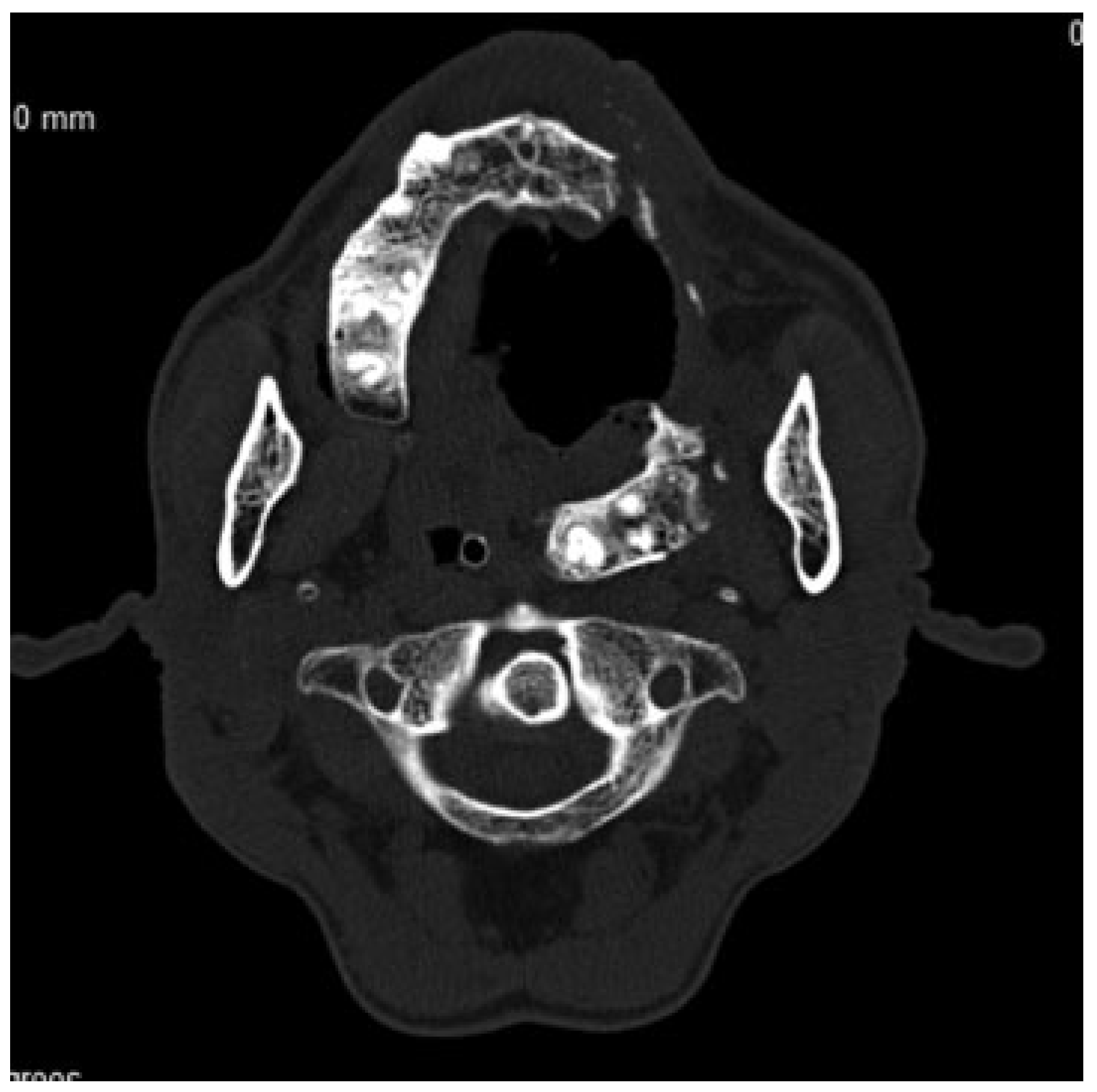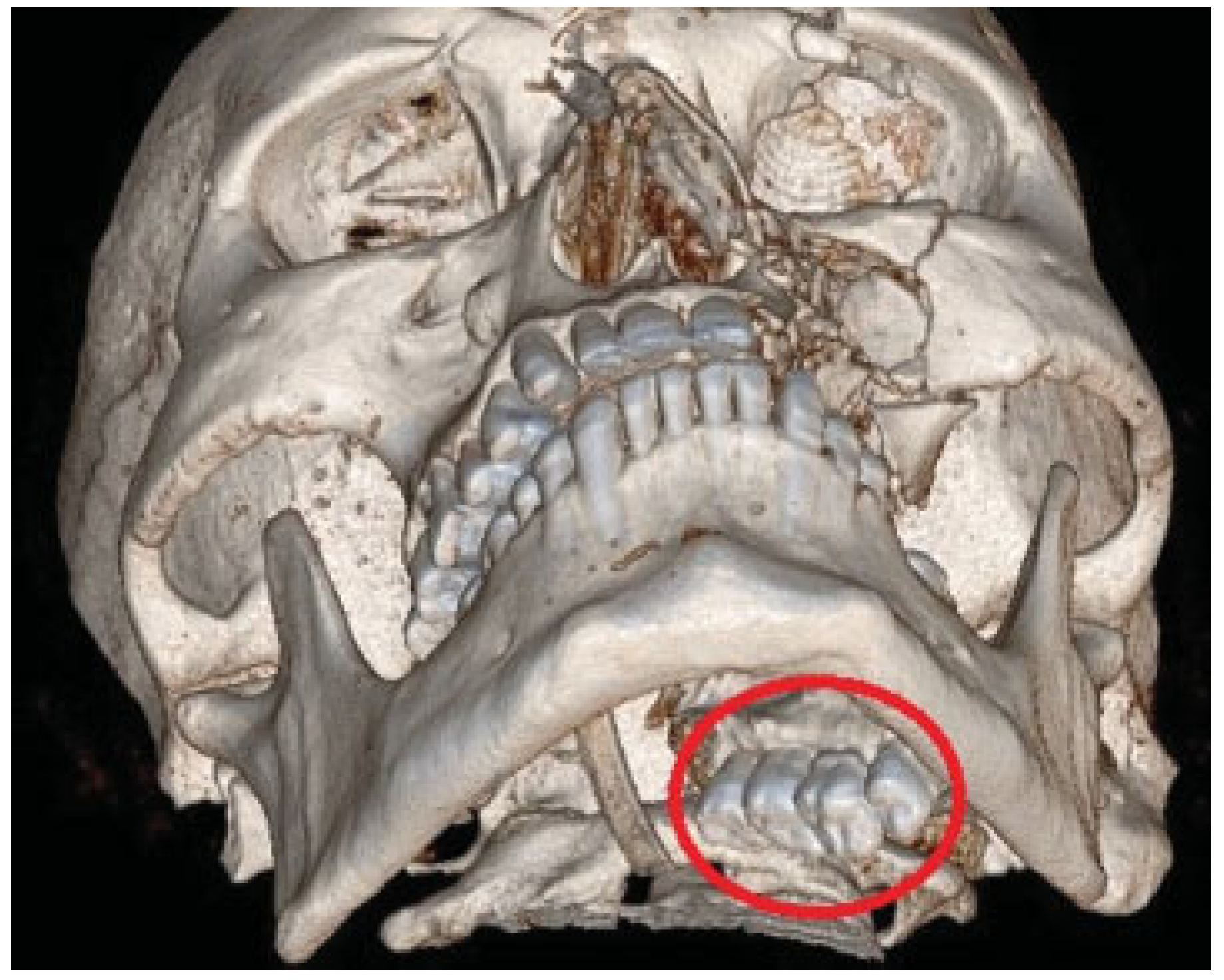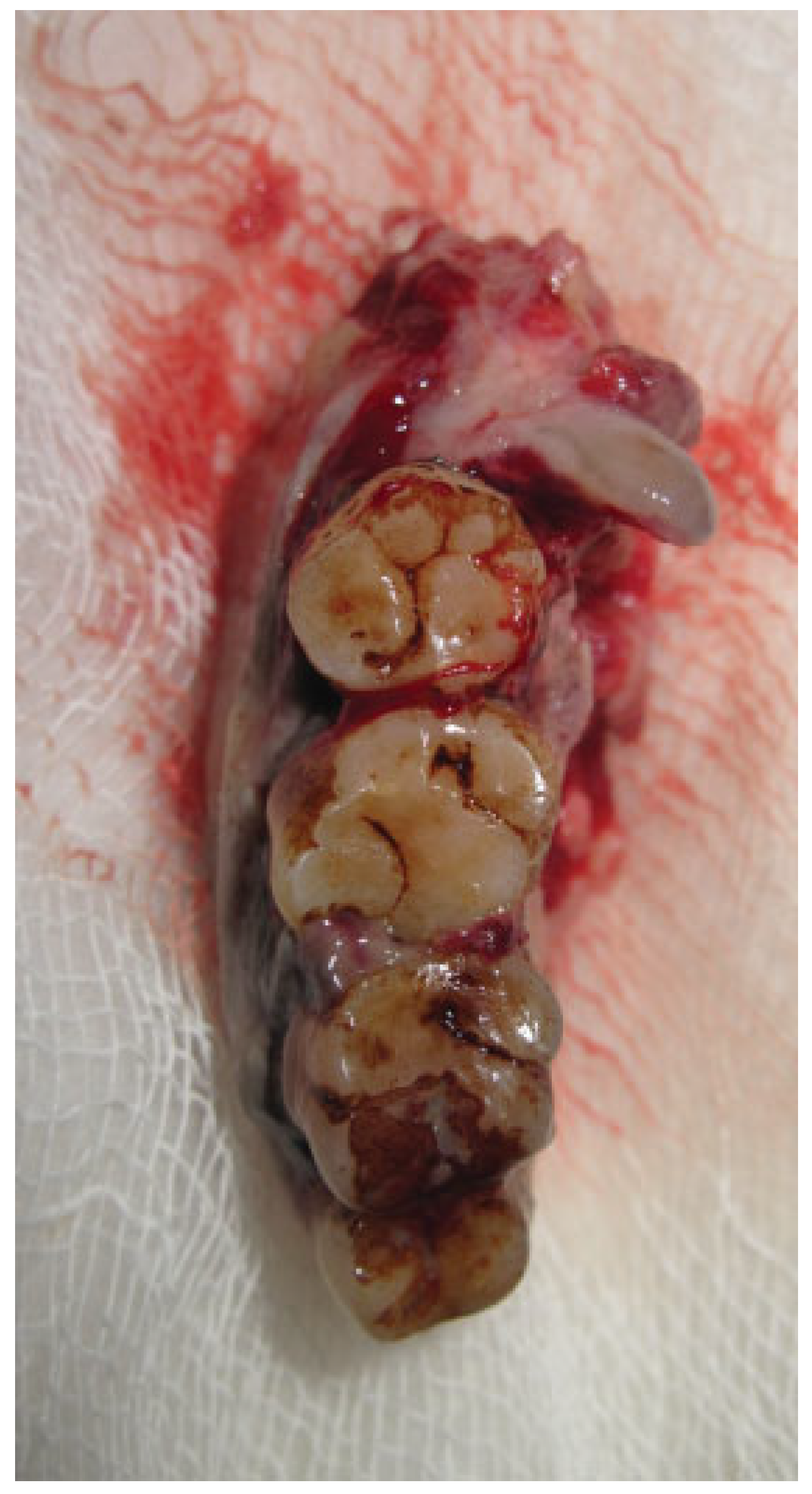Interesting Case: Displacement of Fractured Maxilla into Pharyngeal Space
Abstract
:References
- GA, G.; Currie, A. Unusual Le Fort I fracture. Br J Oral Maxillofac Surg 2013, 51, 669–670. [Google Scholar]
- Al-Hadad, I.; Burke, G.A.E.; Webster, K. Dentoalveolar fracture of the posterior maxilla. Br J Oral Maxillofac Surg 2009, 47, 165. [Google Scholar] [CrossRef] [PubMed]
- Monaghan, A.M. An unusual Le Fort II fracture. Br J Oral Maxillofac Surg 1991, 29, 256–258. [Google Scholar] [CrossRef] [PubMed]



© 2014 by the author. The Author(s) 2014.
Share and Cite
Krishnan, B.; Parida, P.K.; Gopalakrishnan, S. Interesting Case: Displacement of Fractured Maxilla into Pharyngeal Space. Craniomaxillofac. Trauma Reconstr. 2014, 7, 249-250. https://doi.org/10.1055/s-0034-1375170
Krishnan B, Parida PK, Gopalakrishnan S. Interesting Case: Displacement of Fractured Maxilla into Pharyngeal Space. Craniomaxillofacial Trauma & Reconstruction. 2014; 7(3):249-250. https://doi.org/10.1055/s-0034-1375170
Chicago/Turabian StyleKrishnan, Balasubramanian, Pradipta Kumar Parida, and Surianarayanan Gopalakrishnan. 2014. "Interesting Case: Displacement of Fractured Maxilla into Pharyngeal Space" Craniomaxillofacial Trauma & Reconstruction 7, no. 3: 249-250. https://doi.org/10.1055/s-0034-1375170
APA StyleKrishnan, B., Parida, P. K., & Gopalakrishnan, S. (2014). Interesting Case: Displacement of Fractured Maxilla into Pharyngeal Space. Craniomaxillofacial Trauma & Reconstruction, 7(3), 249-250. https://doi.org/10.1055/s-0034-1375170


